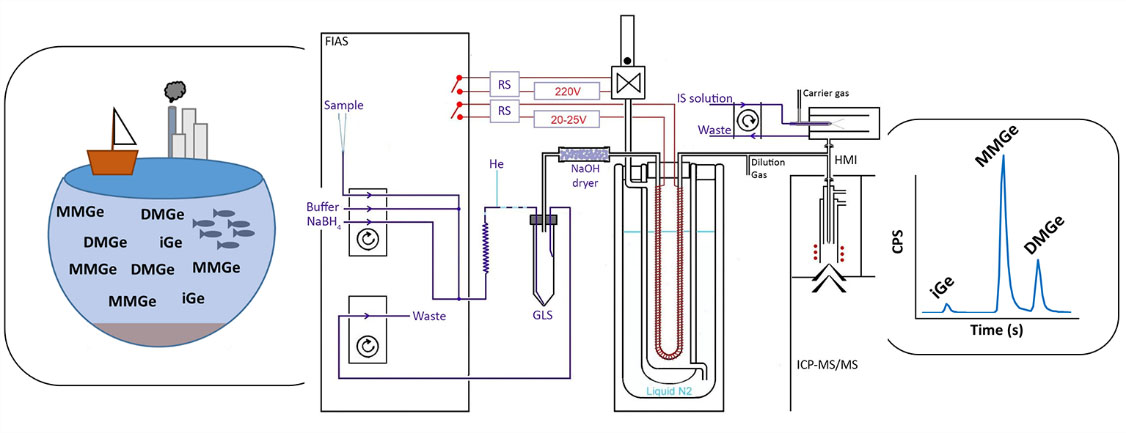Research
SPECIATION ANALYSIS OF GERMANIUM
So called technology critical elements (TCE) are nowadays increasingly used and important for modern technologies. At the same time, they are rare in nature which creates high supply risk. Sensitive analytical methods would enable proper study of their natural and anthropogenic cycles and how they are linked, as well as their (eco)toxicological impact. TCE analysis in environmental samples, including speciation information, at ultratrace levels is right at the current limits of modern analytical chemistry. Due to presence in environment at (ultra)trace concentrations, analytical challenges and their relative industrial irrelevance until recent years, there is a group of elements which were less often studied. Germanium is one of those elements.

Germanium geochemical behavior is strongly linked to silicon. It is mainly present in the environment at oxidation state +4, forming an inorganic species (iGe), Ge(OH)4 at natural pH. In natural waters, it has been reported just the presence of mono- and dimethylgermanium (MMGe and DMGe respectively), but not tri- (TMGe) or tetramethylgermanium. In fresh waters, iGe concentrations are reported in single to low tens of ng L-1 iGe, the methylated species are scarcely detectable. In seawaters, methylated Ge species are present in the range 20-28 and 5-8 ng L-1 of MMGe and DMGe, respectively. Methylated species of germanium are most likely detached from the biogeochemical cycling of iGe. iGe, which is of main interest to geochemical and environmental studies, is present in seawater in much lower concentrations, in single or below ng L-1
Ge is an element forming volatile hydrides by reaction with sodium borohydride. HG-CT-ICP-MS is currently the only method that fits for speciation analysis of Ge in environmental waters. We adopted the HG-CT method originally developed for As analysis for analysis of germanium species in natural water samples, with attention to possible artefacts. ICP-MS/MS modes were explored for ultrasensitive and interference free detection. After optimization, HG was performed from TRIS buffer reaction medium with added L-cysteine as reaction modifier. Sources of blanks were explored; use of subboil distilled deionized water and a procedure for clean-up of buffer suppressed iGe blanks below 0.1 ng L-1. Absence of matrix effects allowed external calibration quantification. Demethylation in the course of HG reaction (from the TRIS-L-cysteine buffer) as a possible source of iGe analysis error was ruled out. Limits of detection (LOD) of 0.015 ng L-1 and 0.005 ng L-1 have been achieved for iGe and methylated species, respectively. Standard addition experiments did not show significant matrix effect, and therefore external calibration has been used for sample analysis. The method has been applied to analysis of iGe, MMGe and DMGe in certified reference materials of unspiked natural waters: CASS-4, CASS-5 and CASS-6 (nearshore seawater); NASS-5 and NASS-7 (seawater); SLRS-4, SLRS-5 and SLRS-6 (river water), the first values so far published for seawater reference materials.
RELATED PAPERS:
- GARCÍA-FIGUEROA A., FILELLA M. TOMÁŠ MATOUŠEK T.: Speciation of germanium in environmental water reference materials by hydride generation and cryotrapping in combination with ICP-MS/MS, Talanta, submitted.


